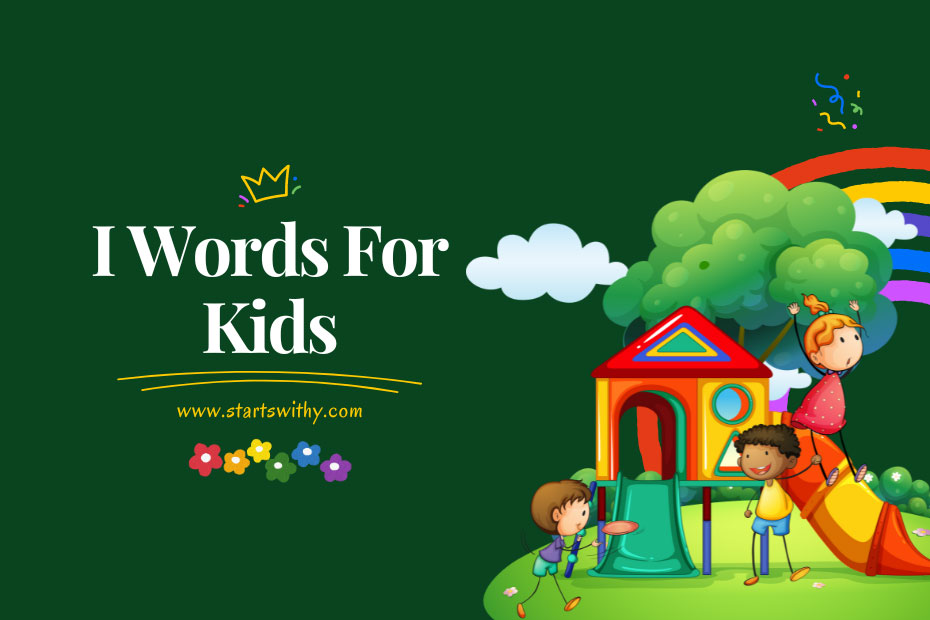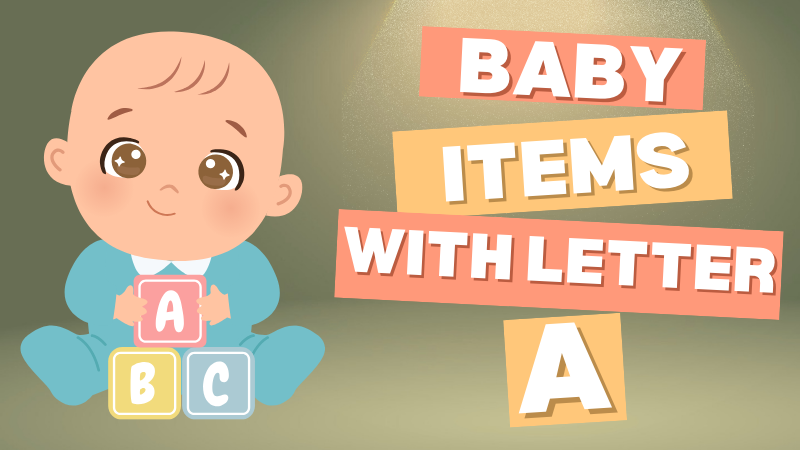Hey there! Are you ready to dive into the exciting world of “I words” for kids in Kindergarten and Preschool? Well, you’ve come to the right place! In this article, I’ll be sharing a bunch of fun and educational words that start with the letter “I” to help your little ones expand their vocabulary and enhance their language skills. From adorable animals to interesting objects, we’ll explore a wide range of words that will keep your kids engaged and entertained. So, let’s get started and discover the wonderful world of “I words” together!
Importance of Learning I Words
As a Kindergarten and Preschool teacher, I understand the importance of building a strong vocabulary foundation for young children. One way to achieve this is by introducing them to a variety of words that start with the letter “I”. Learning words that begin with “I” not only expands their vocabulary, but also enhances their language skills, communication abilities, and cognitive development.
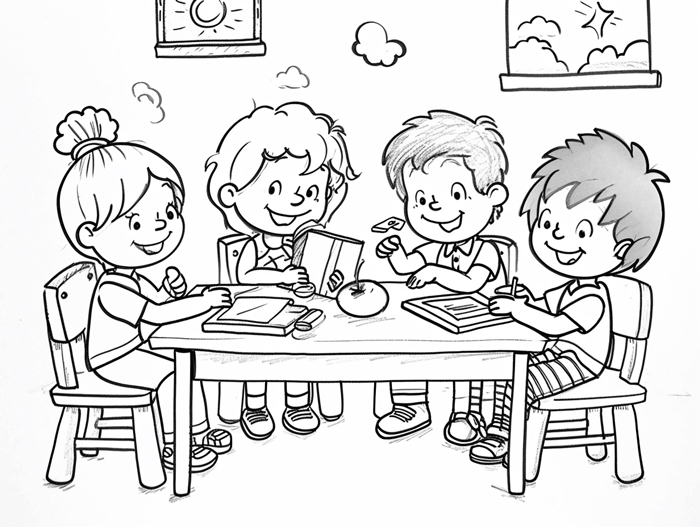
Here’s why learning “I” words is crucial for young learners:
- Improves Language Skills: Introducing “I” words helps children broaden their vocabulary and familiarize themselves with different sounds and syllables. This exposure to new words enhances their ability to express themselves clearly and effectively.
- Enhances Cognitive Development: Learning “I” words encourages cognitive thinking and enhances memory and problem-solving skills. When children encounter new words, they have to decipher their meaning, which stimulates their brain and fosters critical thinking.
- Promotes Language Fluency: By incorporating “I” words into their vocabulary, young learners become more confident in their language skills. The more words they know, the more they can engage in conversations, ask questions, and convey their thoughts and ideas effectively.
- Facilitates Reading and Writing Readiness: Learning “I” words helps children recognize and differentiate letters, which lays the foundation for reading and writing. Familiarity with letter sounds and word patterns paves the way for early literacy skills.
- Broadens Knowledge of the World: Introducing “I” words related to animals, objects, and even emotions exposes children to a wider range of concepts and helps them understand the world around them. They develop a deeper understanding of the environment, animals in nature, and the various objects they encounter in their daily lives.
Incorporating “I” words into your teaching curriculum can have a positive impact on your students’ language development, cognitive skills, and overall confidence. By encouraging them to explore and engage with these words, you’ll lay the groundwork for their future linguistic success.
Remember, language acquisition is a gradual process, and repetition is key. By incorporating “I” words into daily activities, conversations, and games, you can create an immersive learning environment that will foster the growth of your young learners’ vocabulary and language skills. So, let’s dive into the fascinating world of “I” words and watch your students thrive in their linguistic journey.
Preschool Words that Start with I
| Word | Sentence for Kids |
|---|---|
| Ice | I love to eat ice cream on a hot day. |
| Igloo | Eskimos build igloos out of ice and snow. |
| Insect | Look at the tiny insect crawling on the leaf. |
| Island | Pirates search for treasure on a desert island. |
| Icicle | The icicle on the roof sparkles in the sun. |
| Indian | We can read a story about a brave Indian chief. |
| Inchworm | Watch the inchworm move slowly along the branch. |
| Idea | Share your creative idea for our art project. |
| Ivy | The ivy plant climbs up the wall. |
| Igloo | Eskimos build igloos out of ice and snow. |
| Iceberg | An iceberg floats in the cold polar waters. |
4 Letter Words for Toddlers that Start with I
| Word | Fun Sentence for Kids |
|---|---|
| Inch | Look, there’s a tiny inchworm on the leaf. |
| Iced | I like my drink with lots of iced cubes. |
| Iron | The iron is hot and ready for ironing. |
| Idea | I have an idea for a fun game we can play. |
| Icon | The icon on the screen shows a smiley face. |
| Isle | The beautiful isle is surrounded by the sea. |
| Itch | My mosquito bite makes me want to itch. |
| Iris | The iris of your eye is colorful and unique. |
| Idle | When the car is idle, it’s not moving. |
| Izzy | Izzy is my friend’s playful puppy. |
Words That Start With I For Kids
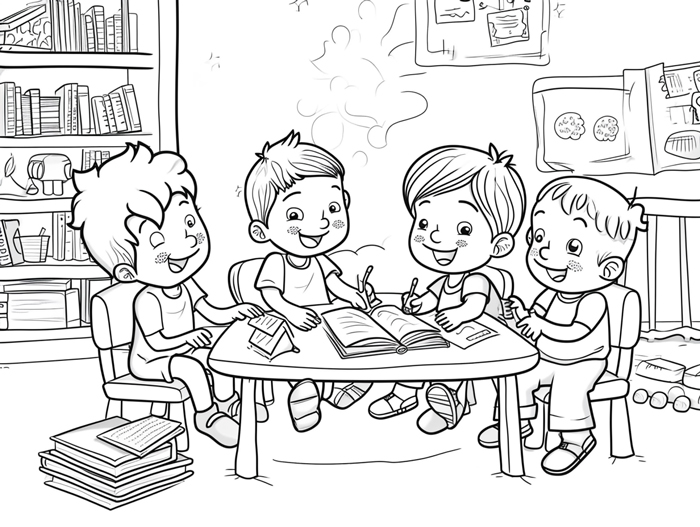
| Word | Fun Sentence for Kids |
|---|---|
| Ice | I love to eat ice cream on a hot day. |
| Insect | Look at the tiny insect crawling on the leaf. |
| Island | Pirates search for treasure on a desert island. |
| Iceberg | An iceberg floats in the cold polar waters. |
| Idea | Share your creative idea for our art project. |
| Icicle | The icicle on the roof sparkles in the sun. |
| Ivy | The ivy plant climbs up the wall. |
| Igloo | Eskimos build igloos out of ice and snow. |
| Indian | We can read a story about a brave Indian chief. |
| Inchworm | Watch the inchworm move slowly along the branch. |
| Imagination | Your imagination can take you on amazing adventures. |
Science Words That Start With I
| Word | Fun Sentence for Kids |
|---|---|
| Insect | Let’s study the tiny insect under the microscope. |
| Igneous rock | Igneous rock forms when molten lava cools and hardens. |
| Inertia | Inertia keeps things at rest and objects in motion. |
| Infrared | Infrared light is invisible but can be felt as heat. |
| Ion | Ions are tiny charged particles found in matter. |
| Isotope | Scientists use isotopes to study elements in nature. |
| Immune | Our immune system fights off germs to keep us healthy. |
| Incisor | Your incisor teeth help you bite into delicious food. |
| Invertebrate | An invertebrate is an animal without a backbone. |
| Innovation | Innovation means coming up with new ideas and inventions. |
| Interaction | The interaction between the sun and water creates rainbows. |
School Words that Start with I
| Word | Fun Sentence for Kids |
|---|---|
| Instructor | The instructor teaches us new things in class. |
| Invitation | I received an invitation to a friend’s birthday party. |
| Interactive | Interactive learning games make school fun. |
| Interesting | The interesting book kept me hooked all night. |
| Idea | I have an idea for a fun school project. |
| Important | Paying attention in class is important for learning. |
| Independent | I’m learning to be independent in my school tasks. |
| Instrument | The music class has a variety of musical instruments. |
| Inspire | My teacher’s stories inspire me to be creative. |
| Inquiry | We can ask questions during our science inquiry. |
| Illustrator | The illustrator drew colorful pictures for the book. |
Cool Words that Start with I For Kids
| Word | Fun Sentence for Kids |
|---|---|
| Ice cream | Let’s go out for ice cream on a hot summer day. |
| Icicle | The icicle on the roof sparkles like a crystal. |
| Island | Imagine going on an adventure to a tropical island. |
| Invention | Thomas Edison made the light bulb, a cool invention. |
| Iceberg | Titanic hit an iceberg, which was huge and icy. |
| Iguana | An iguana is a cool lizard that lives in warm places. |
| Igloo | Eskimos build igloos out of ice in the Arctic. |
| Illusion | The magician’s illusion made the rabbit disappear. |
| Imagination | Your imagination can take you on exciting journeys. |
| Intricate | The intricate design of the snowflake is beautiful. |
| Inquisitive | Be inquisitive and ask questions to learn new things. |
Positive Words that Start with I for Kids
| Word | Fun Sentence for Kids |
|---|---|
| Imagine | Imagine a world full of colorful dreams and adventures. |
| Inspire | Let’s inspire each other to be kind and creative. |
| Incredible | You did an incredible job on your art project! |
| Intrepid | Be intrepid like an explorer and discover new things. |
| Inventive | Your inventive ideas make playtime more fun. |
| Ingenious | That’s an ingenious way to solve the puzzle! |
| Important | You’re important to me, and I value our friendship. |
| Initiative | Taking initiative means starting something new. |
| Independence | Learning to tie your shoes is a sign of independence. |
| Inclusive | We should be inclusive and welcome everyone. |
| Invincible | Use your imagination and feel invincible in your adventures. |
I Words for Kids
As a Kindergarten or preschool teacher, introducing words that start with the letter “I” can be a fun and effective way to enhance your students’ language development. By incorporating “I” words into your teaching curriculum, you can help expand their vocabulary and boost their language skills. In this section, we will explore different categories of “I” words that you can introduce to your young learners.
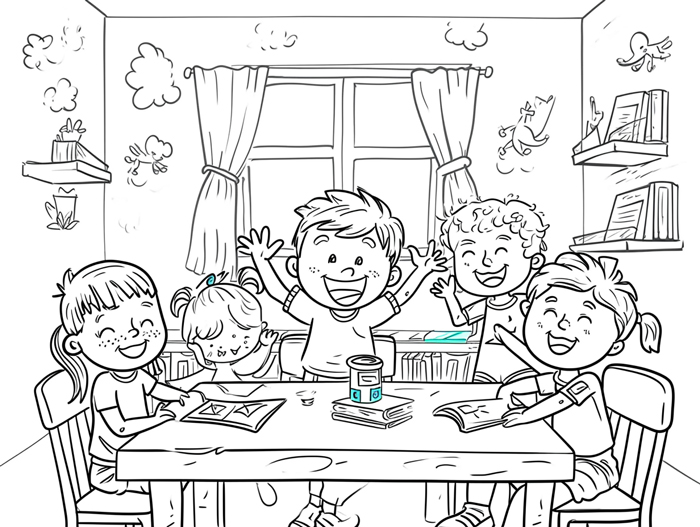
Animals
Teaching kids about animals is always an engaging and exciting topic. By focusing on animals that start with the letter “I,” you can introduce them to new creatures and expand their knowledge of the animal kingdom. Here are some “I” words for animals that you can teach your kids:
- Iguana: The iguana is a reptile that is known for its distinctive appearance and its ability to change color.
- Impala: The impala is a type of antelope that is native to Africa and is known for its incredible jumping abilities.
- Insect: Insects are a diverse group of small creatures that have six legs and typically have wings. They include butterflies, bees, and beetles.
Colors
Learning about colors is an important part of a child’s early education. By introducing “I” words for colors, you can make the learning process more enjoyable and engaging for your students. Here are some “I” words for colors that you can teach your kids:
- Indigo: Indigo is a deep, dark blue color that is often associated with the night sky.
- Ivory: Ivory is a creamy white color that is often seen in the form of elephant tusks.
- Iris: The iris is a part of the eye that gives it its color. It can also refer to a flower that comes in various shades, including purple, blue, and white.
Shapes
Teaching kids about different shapes is essential for their cognitive development and critical thinking skills. By incorporating “I” words for shapes into your lessons, you can make geometry more accessible and fun for your young learners. Here are some “I” words for shapes that you can teach your kids:
- Isosceles: An isosceles triangle is a shape that has two sides of equal length.
- Irregular: An irregular shape is one that does not have regular or symmetrical sides.
- Intersection: An intersection is a point where two lines or shapes meet or cross each other.
Activities to Practice I Words
Interactive Games
Incorporating interactive games is a fun and engaging way to help young children learn and practice “I” words. Here are some ideas to try:
- I Spy: Play a game of “I Spy” with your students, focusing on objects that start with the letter “I.” For example, “I spy with my little eye something starting with the letter I… an iguana!” This game encourages observation and enhances vocabulary.
- Word Hunt: Create a word hunt activity where students search for hidden cards with “I” words. Provide pictures or illustrations along with the words to make it more accessible to early readers. After finding the words, have them use the words in sentences to further reinforce their understanding.
- Memory Matching: Create a memory matching game using cards with “I” words and corresponding pictures. Students take turns flipping over the cards to find a matching pair, while also practicing word recognition.
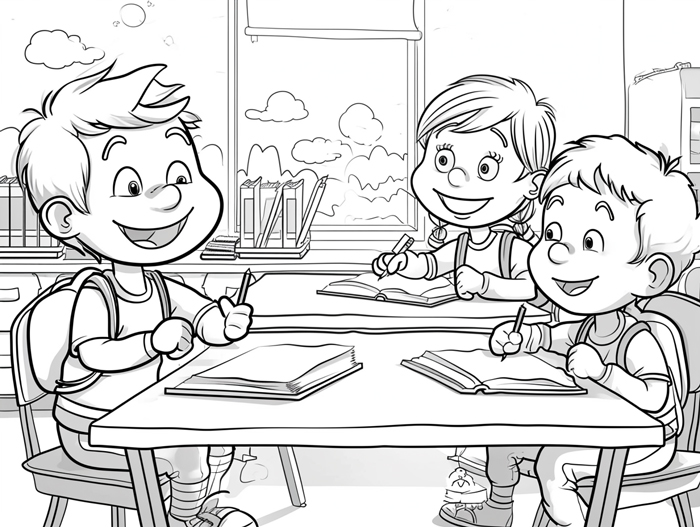
Crafts and Art Projects
Boost creativity while practicing “I” words through crafts and art projects. Here are a few suggestions:
- Igloo Collage: Provide materials like construction paper, cotton balls, and glue for students to create an igloo collage. Encourage them to label and discuss the different materials they use, incorporating “I” words like igloo, ice, and iguana.
- Shape Isolation: Choose a shape that starts with the letter “I”, such as an ice cream cone or an island. Have students cut out or trace the shape, and then use it as a template to create their own artwork. This activity reinforces shape recognition and introduces new vocabulary.
- Letter I Printing: Practice letter formation and writing skills by having students trace and print the letter “I” using various art mediums such as finger paints, colored pencils, or markers. Encourage them to brainstorm and write down “I” words they know while practicing the letter.
Songs and Rhymes
Integrating songs and rhymes into the curriculum can make learning “I” words more enjoyable and memorable for young children. Here are a few examples:
- The Itsy Bitsy Spider: Sing the classic nursery rhyme “The Itsy Bitsy Spider” together, emphasizing the beginning sound of “I” in words like itsy and itsy bitsy.
- I Have a Little Turtle: Teach the traditional folk song “I Have a Little Turtle” to introduce vocabulary related to turtles and their habitat. Encourage students to sing along and join in the actions while focusing on the “I” words in the lyrics.
- Five Little Ice Creams: Create a counting and rhyming activity with the rhyme “Five Little Ice Creams.” Sing the rhyme with actions, incorporating “I” words like ice cream, ice, and in. This activity combines numeracy skills and language development.
By incorporating interactive games, crafts, art projects, songs, and rhymes into the teaching of “I” words, educators can create a dynamic and engaging learning environment for their students. These activities help children develop vocabulary, enhance cognitive skills, and build confidence in their language abilities.
Tips for Teaching “I” Words
Make it Fun and Engaging
When it comes to teaching “I” words to young children, it’s important to make the learning experience fun and engaging. Here are a few tips to make your lessons enjoyable:
- Interactive Games: Incorporate interactive games like “I Spy” and word hunts. These activities not only help children practice identifying “I” words, but they also encourage active participation and engagement.
- Crafts and Art Projects: Get creative with crafts and art projects that focus on “I” words. For example, you can have children create an igloo collage or trace the letter “I” using different materials. This hands-on approach enhances their vocabulary while allowing them to express their creativity.
- Songs and Rhymes: Integrate familiar songs and rhymes that contain “I” words. Songs like “The Itsy Bitsy Spider” and “I Have a Little Turtle” provide a playful way for children to practice these words and improve their language skills. Encourage them to sing along and do some actions as they sing.
- Puzzles and Matching Activities: Use puzzles and matching activities to reinforce the concept of “I” words. You can create puzzles where children match pictures to their corresponding “I” words or have them match word cards to picture cards. These hands-on activities enhance their cognitive skills while making learning enjoyable.
Use Visual Aids
Visual aids are a powerful tool in teaching “I” words as they help children associate the word with its meaning and improve understanding. Here are some effective ways to use visual aids:
- Flashcards: Create flashcards with “I” words and corresponding images. Show the flashcards to children and ask them to identify the word and its beginning sound. This visual reinforcement helps strengthen their vocabulary and phonics skills.
- Word Walls: Set up a word wall in your classroom displaying “I” words. Use colorful letters to make the words stand out, and encourage children to use the word wall as a reference when writing or speaking.
- Picture Books: Read picture books that feature “I” words. Point out the words as you read and ask children to identify them in the illustrations. This interactive reading experience not only exposes children to new vocabulary but also helps improve their reading comprehension.
- Digital Resources: Incorporate interactive digital resources such as educational apps or websites that offer engaging activities to practice “I” words. These resources often include colorful visuals, games, and quizzes that make learning interactive and enjoyable.
By making your lessons fun and using visual aids, you can create an engaging learning environment that promotes vocabulary acquisition, cognitive development, and language confidence in young children. Remember, the key is to keep the activities interactive and age-appropriate, allowing children to learn while having fun.
Conclusion
Teaching “I” words to young children in Kindergarten and Preschool can be an exciting and interactive experience. By incorporating various activities such as games, crafts, songs, and visual aids, we can create a stimulating learning environment that promotes vocabulary acquisition, cognitive development, and language confidence in young learners.
Interactive games like “I Spy” and word hunts encourage active participation and help children associate the letter “I” with objects and words in their surroundings. Crafts and art projects such as creating an igloo collage or tracing the letter “I” provide a hands-on approach that reinforces letter recognition and phonics.
Integrating songs and rhymes that contain “I” words not only makes learning enjoyable but also helps children remember the words in a melodic way. Puzzles and matching activities provide opportunities for children to practice identifying and matching “I” words, enhancing their understanding and retention.
Visual aids such as flashcards, word walls, picture books, and digital resources serve as valuable tools to reinforce the concept of “I” words and expand children’s vocabulary. These visual aids make learning more engaging and accessible, allowing children to connect words with their corresponding images.
By implementing these strategies, we can create a fun and engaging learning experience that fosters language development and sets a strong foundation for future literacy skills. So let’s dive into the world of “I” words and watch our young learners flourish in their language journey.
